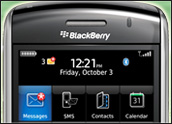
The focus of a U.S. Senate hearing Monday afternoon is the potential danger of cellphone use — specifically, the risk of brain cancer. That link was suggested as long ago as last decade, when cellphones were slightly smaller than a shoebox and just beginning to become part of the everyday landscape.
As cellphone use became ubiquitous and researchers repeatedly discounted health concerns, the perception of risk faded among the general public.
Under Review
Now, that may be changing. The Senate review was prompted in part by a new report from the Environmental Working Group, a Washington, D.C.-based nonprofit that recently evaluated the top cellphones and smartphones, measuring the levels of watts per kilogram.
The results include a list of top 10 “good” and “bad” cellphones and smartphones, along with tips for safeusage and levels for all currently available and legacy models. Pennsylvania Senator and cancer survivor Arlen Specter is chairing the hearing in the Subcommittee on Labor, Health and Human Services, and Education and Related Agencies, which began at 2 p.m. ET.
A representative from EWG is among those scheduled to testify.
EWG is not the only group to be concerned about the link between cancer and cellphone use, cancer researcher Devra Davis told TechNewsWorld. Davis is also testifying at the hearing.
“There are good strong reasons for concern, which is why Finland, Sweden, Denmark, Norway, Iceland, Israel, India, and some cities in Austria and Brazil have issued warnings for all users,” she said.
“We do not have ample evidence that cellphones are safe and urgently need research,” she said. “Any assertions that cellphones are safe are misleading. We are especially concerned about our young people and must protect the brains of children which are still developing.”
Surprising Range
There have been a number of studies — mainly conducted overseas — that do, in fact, show a link between cancer and cellphone use. A joint study by researchers in Denmark, Finland, Norway, Sweden and the United Kingdom, for example, found that people who had used cellphones for more than 10 years had a significantly increased risk of developing glioma, a usually malignant brain tumor, on theside of the head they had favored for cellphone conversations.
In a study of 420,095 Danish adults, it was found that long-term cellphone users were 10 to 20 percent more likely to be hospitalized for migraines and vertigo than people who had taken up cellphones morerecently.
The EWG study differs in that it focuses on particular devices and offers some hope that they can still be used, despite the apparent long-term risk.
The group found several phones that emitted less radiation than others. These are the phones, obviously, they recommend.
In fact, EWG was surprised at the wide range of values, Nneka Leiba, a researcher with the group, told TechNewsWorld. A number of phones came very close to 1.6 W/kg — the standard established by the FCC in 1993.
“We saw some phones emit eight times more radiation than other phones,” said Leiba.
The Samsung Impression (SGH-a877) offered by AT&T is the safest cellphone on the market, while the worst is the Motorola MOTO VU204 offered by Verizon Wireless, according to the report.
Lower Signal, Higher Risk
EWG is not expecting consumers to abandon their cellphones, Leiba said. The organization is hoping for more Congressional scrutiny of the standard — as well as some publicity in promoting safer cellphone use. The first step towards the later is to use a low radiation phone, a complete list of which can be found in the EWG’s report.
EWG also wants to focus more study on the impact of cellphone use on children and teenagers. Children’s skulls are softer and thinner and thus more vulnerable to radiation, Leiba noted.
Other advice includes urging people to text in favor of making voice calls; to invest in a headset, which emits far less radiation; and to avoid using the phone when signals are low.
“That is when the phone is emitting the most radiation,” Leiba said.





















































So in this case, hands free should be a good option instead of chaning the high freq. mobile phones.